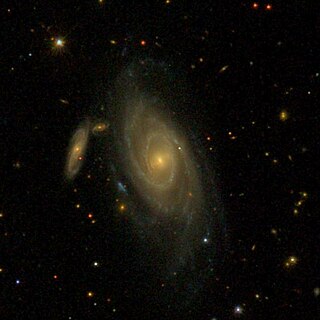
NGC 36 is a barred spiral galaxy in the constellation Pisces. It is located about 221 million light-years away. It was discovered in October 25, 1785, by the astronomer William Herschel.

NGC 463 is a lenticular galaxy located about 264 million light-years away from Earth in the constellation Pisces. It was discovered by French astronomer Édouard Stephan on December 16, 1871.
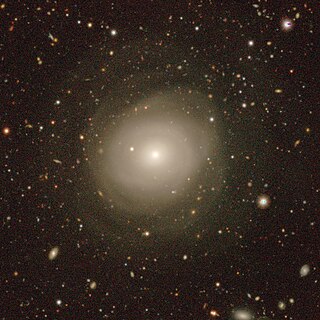
NGC 466 is a lenticular galaxy located about 227 million light-years away from Earth in the constellation Tucana. NGC 466 was discovered by astronomer John Herschel on October 3, 1836.

NGC 491 is a barred spiral galaxy located about 161 million light-years away from Earth, in the constellation Sculptor. NGC 491 was discovered by astronomer John Herschel on September 25, 1834.
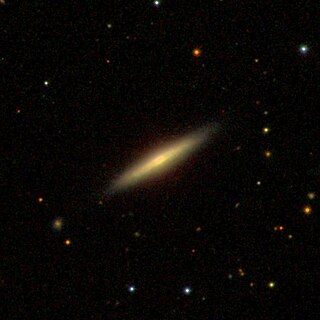
NGC 489 is probably an edge-on spiral galaxy located about 97 million Light-years away from Earth in the constellation Pisces. NGC 489's calculated velocity is 2507 km/s. NGC 489 was discovered by German astronomer Heinrich Louis d'Arrest on December 22, 1862.

NGC 487 is a barred spiral galaxy located about 250 million light-years away from Earth in the constellation Cetus. NGC 487's calculated velocity is 5949 km/s. NGC 487 was discovered by American astronomer Francis Leavenworth on November 28, 1885.

NGC 480 is a spiral galaxy located about 546 million light-years away from Earth in the constellation Cetus. NGC 480 was discovered by American astronomer Francis Leavenworth In 1886.
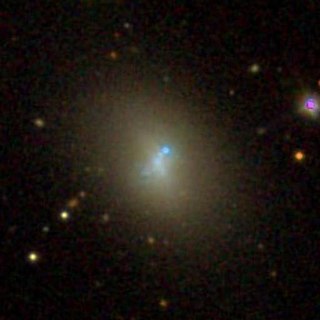
NGC 7077 is a lenticular blue compact dwarf galaxy located about 56 million light-years away from Earth in the constellation Aquarius. Discovered by astronomer Albert Marth on August 11, 1863, the galaxy lies within the Local Void.

NGC 7030 is a barred spiral galaxy located about 380 million light-years away in the constellation Capricornus. NGC 7030 has an estimated diameter of 133,510 light-years. NGC 7030 was discovered by astronomer Francis Preserved Leavenworth on September 3, 1885.

NGC 7040 Is a spiral galaxy located about 260 million light-years away in the constellation of Equuleus. It has an estimated diameter of 42,600 light-years. NGC 7040 was discovered by astronomer Mark Harrington on August 18, 1882.

NGC 4620 is a lenticular galaxy located about 65 million light-years away in the constellation of Virgo. It was discovered by astronomer John Herschel on March 29, 1830. NGC 4620 is a member of the Virgo Cluster.

NGC 4871 is a lenticular galaxy located about 310 million light-years away in the constellation of Coma Berenices. NGC 4871 was discovered by astronomer Heinrich d'Arrest on May 10, 1863. It is a member of the Coma Cluster.

NGC 6039 is a massive lenticular galaxy located about 460 million light-years away in the constellation Hercules. NGC 6039 was discovered by astronomer Édouard Stephan on June 27, 1870 and later rediscovered by astronomer Lewis Swift on June 27, 1886. NGC 6039 is member of the Hercules Cluster, which is part of the CfA2 Great Wall.

NGC 4578 is a lenticular galaxy located about 55 million light-years away in the constellation Virgo. NGC 4578 was discovered by astronomer William Herschel on January 18, 1784 and is a member of the Virgo Cluster.
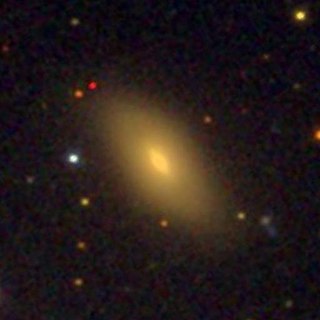
NGC 1274 is a compact elliptical galaxy located about 280 million light-years away in the constellation Perseus. NGC 1274 was discovered by astronomer Lawrence Parsons on December 4, 1875. It is a member of the Perseus Cluster.

NGC 3875 is a lenticular galaxy located about 325 million light-years away in the constellation Leo. It was discovered by astronomer William Herschel on April 27, 1785 and is a member of the Leo Cluster.

NGC 7199 is a barred spiral galaxy registered in the New General Catalogue. It is located in the direction of the Indus constellation. It was discovered by the English astronomer John Herschel in 1835 using a 47.5 cm reflector.

NGC 4637 is a lenticular galaxy located in the Virgo constellation, originally discovered by R.J. Mitchell on March 1, 1854. It is a member of the Virgo Cluster, and is located in the sky very close to the brighter and larger galaxy NGC 4638, which historically led to some confusion upon discovery and later observations.

NGC 2008 is a distant spiral galaxy located in the constellation Pictor. Its speed relative to the cosmic microwave background is 10,367 ± 11 km/s, which corresponds to a Hubble distance of 153 ± 11 Mpc. NGC 2008 was discovered by British astronomer John Herschel in 1834. The luminosity class of NGC 2008 is III with an apparent magnitude of 13.2.

NGC 1024 is a large spiral galaxy of type Sab located in the constellation Aries. Its speed relative to the cosmic microwave background is 3,306 ± 16 km/s, which corresponds to a Hubble distance of 48.8 ± 3.4 Mpc. NGC 1024 was discovered by German-British astronomer William Herschel in 1786.




















